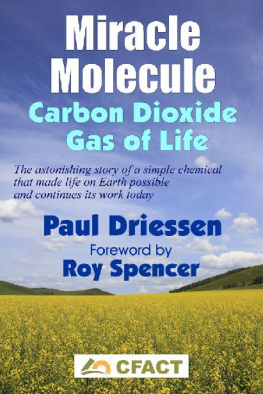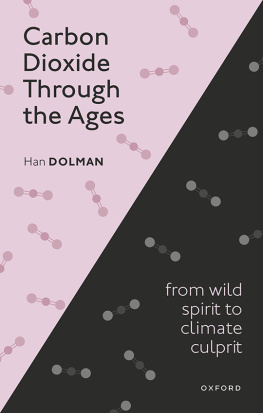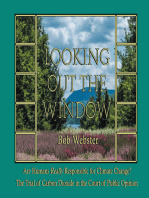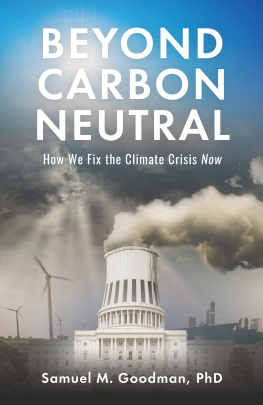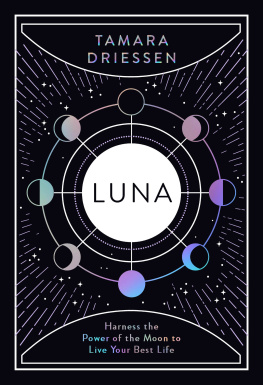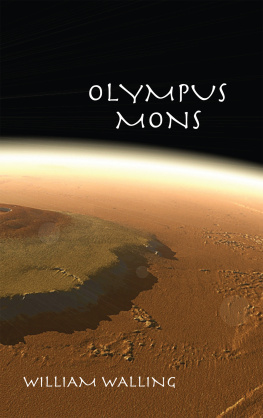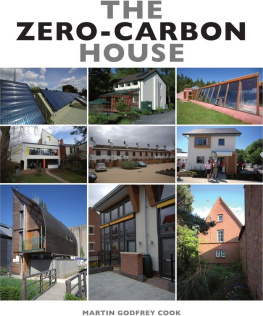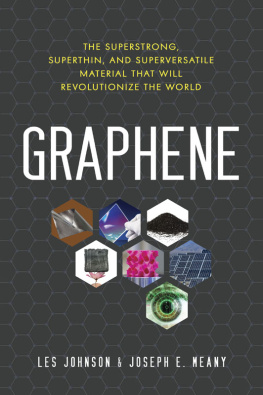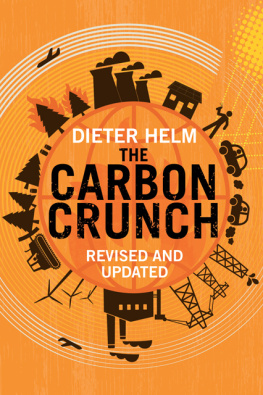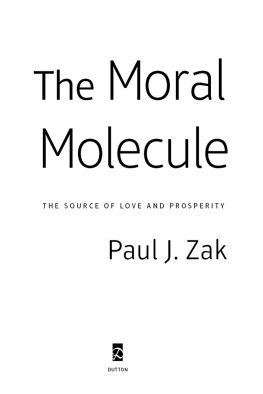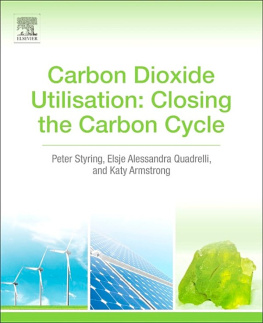Paul Driessen - Miracle Molecule: Carbon Dioxide, Gas of Life
Here you can read online Paul Driessen - Miracle Molecule: Carbon Dioxide, Gas of Life full text of the book (entire story) in english for free. Download pdf and epub, get meaning, cover and reviews about this ebook. year: 2014, publisher: CFACT, genre: Romance novel. Description of the work, (preface) as well as reviews are available. Best literature library LitArk.com created for fans of good reading and offers a wide selection of genres:
Romance novel
Science fiction
Adventure
Detective
Science
History
Home and family
Prose
Art
Politics
Computer
Non-fiction
Religion
Business
Children
Humor
Choose a favorite category and find really read worthwhile books. Enjoy immersion in the world of imagination, feel the emotions of the characters or learn something new for yourself, make an fascinating discovery.
- Book:Miracle Molecule: Carbon Dioxide, Gas of Life
- Author:
- Publisher:CFACT
- Genre:
- Year:2014
- Rating:4 / 5
- Favourites:Add to favourites
- Your mark:
- 80
- 1
- 2
- 3
- 4
- 5
Miracle Molecule: Carbon Dioxide, Gas of Life: summary, description and annotation
We offer to read an annotation, description, summary or preface (depends on what the author of the book "Miracle Molecule: Carbon Dioxide, Gas of Life" wrote himself). If you haven't found the necessary information about the book — write in the comments, we will try to find it.
Miracle Molecule: Carbon Dioxide, Gas of Life — read online for free the complete book (whole text) full work
Below is the text of the book, divided by pages. System saving the place of the last page read, allows you to conveniently read the book "Miracle Molecule: Carbon Dioxide, Gas of Life" online for free, without having to search again every time where you left off. Put a bookmark, and you can go to the page where you finished reading at any time.
Font size:
Interval:
Bookmark:
Miracle Molecule
Carbon Dioxide: The Gas of Life
Tiny amounts of this miracle molecule make life on Earth possible.
Rising atmospheric CO2 levels spur forest and crop growth,
help plants survive heat and drought, and feed the world.
Paul Driessen
Foreword by
Roy Spencer

CFACT
Washington, D.C.
2014 Paul Driessen
All rights reserved. No part of this book may be reproduced or transmitted in any form or by any means, electronic or mechanical, including photocopying, recording, or by an information storage and retrieval systemexcept by a reviewer who may quote brief passages in a reviewwithout permission in writing from the publisher.
Cover design by Northwoods Studio. Cover image by Lnsyszg | Dreamstime.com.
Edited by Ron Arnold.
Published by CFACT, Washington, D.C.
ISBN-13: 978-0-9904971-1-0
BISAC Subject Code: SCI007000
Ebook created in the United States of America
by Digital Conversion Laboratories.
This book is very timely, and even long overdue.
We live in a time when what was once accepted science is now being rejected often to be replaced by facts that simply are not factual. Prevailing fallacies about carbon dioxide are a good example.
As Paul Driessen observes in his introduction, many people today hear the words carbon dioxide and immediately react by thinking, Oh, yes, thats the heat-trapping greenhouse gas that causes man-made global warming. But theyre only partly correct and, as philosopher-poet Alexander Pope said three centuries ago, a little learning is a dangerous thing.
It is true that carbon dioxide or CO2 is one of the greenhouse gases that help Earths atmosphere keep some of the suns heat from escaping back into outer space, thereby maintaining our planets temperature within ranges that support life.
In fact, if it werent for carbon dioxide, nearly all life on Earth would end. Thats because plants of every description trees, grasses, algae, ocean phytoplankton and food crops require CO2 for photosynthesis. It is photosynthesis that produces fiber for wildlife habitats and peoples homes and clothing, food for animals and humans, and oxygen for people and animals to breathe. Without this miracle molecule we call carbon dioxide, Earth would be very different, inhabited by species that require methane or some other gas to sustain them.
Paul Driessens brief book about this gas of life is certainly engaging. It revisits these important lessons and provides fascinating details about the many ways carbon dioxide enriches Earths atmosphere, enhances our lives, and safeguards life itself. However, his book will likely be enraging for some readers, because it also challenges much of what people are being taught these days about carbon dioxide.
Having studied the atmosphere, climate change and climate politics for several decades, and having written about these topics in books, articles and scientific research papers, I know that CO2 became a villain because of energy and environmental politics. This molecule might be the gas of life. Atmospheric CO2 might be over 99 percent natural in origin. But it is also a byproduct of burning fossil fuels hydrocarbons like oil, gas and coal.
For reasons that I dont fully understand, some people and organizations decided that these fuels are bad or harmful, even though they still account for more than 80 percent of the energy that makes modern technologies, civilizations, health and living standards possible, in the United States and around the world.
Ironically, carbon dioxide is equally a byproduct of burning wood, grass and animal dung. These are the fuels that billions of people around the world must still rely on to heat their homes and cook their food. These people do not have access to fossil fuels, or to electricity generated by coal and natural gas, as well as by nuclear and hydroelectric power, and to a much lesser extent wind, solar and geothermal power. These energy-poor families live very precarious lives, immersed in poverty, misery, disease, childhood death and early demise even for those lucky enough to make it to their adult years.
Helping these people improve their lives is a moral imperative yet one that is hampered greatly by current views about fossil fuels and carbon dioxide.
It is also interesting to note that atmospheric CO2 levels are now about one and one-half times higher than they were when the modern industrial era began. In fact, carbon dioxide and other greenhouse gas emissions have increased about 11 percent just since 1995. However, despite that significant increase over the last two decades, there has been no statistically significant increase in planetary warming in 18 years. This is completely contrary to what computerized climate models and scientists concerned about a rapidly warming planet had predicted.
Many scientists, me included, now believe the warming influence of carbon dioxide has been greatly overstated. We believe it is likely to be much closer to 1 degree Celsius (1.8 degrees Fahrenheit) for a doubling of CO2 to around 500 parts per million since the dawn of the industrial age.
It is highly unlikely that this level of warming would be harmful. Indeed, most plants and animals would respond very positively to moderately warmer planetary temperatures of this magnitude, especially on a planet with more carbon dioxide in the air.
By contrast, if Earth were to cool by this amount, the impacts on forest, grassland and crop growth, and on wildlife and humans, would likely be very detrimental, especially if they occurred in a world where atmospheric carbon dioxide levels decline from their current state.
In this book, Driessen pays little attention to these energy and political issues. He simply offers information and perspectives on carbon dioxide that differ from what are being taught in our schools, news media and political arenas. His little book is fast-paced, informative, and more enjoyable and easy to understand than any scientific publication you are likely to encounter.
So take an hour or two from your busy schedule, and enjoy this short course in biology.
Roy W. Spencer, PhD
Principal Research Scientist, University of Alabama, Huntsville, bestselling author of Climate Confusion: How global warming hysteria leads to bad science, pandering politicians and misguided policies that hurt the poor, and recipient of NASAs Exceptional Scientific Achievement Medal
This book is about carbon dioxide CO2 for short.
If youre like most Americans, the term elicits a pretty negative reaction. Carbon dioxide is the heat-trapping greenhouse gas that causes man-made global warming, youve been told. And global warming causes melting polar ice caps, rising seas, violent storms, roaring floods, scorching droughts, hellish forest fires, and enough catastrophes to threaten modern civilization and even our very planet.
Youre probably also aware that the United Nations Intergovernmental Panel on Climate Change condemns man-made carbon dioxide emissions for all this and more. You may also have heard that the United States Supreme Court has given the U.S. Environmental Protection Agency the authority to regulate carbon dioxide as a pollutant that endangers human health and welfare.
Ive written many articles and several reports and book chapters addressing these concerns. Suffice it to say the verdict is still out. Thousands of knowledgeable scientists, including many who once accepted these claims, now strongly doubt that humans or carbon dioxide have replaced the many powerful and complex natural forces that have caused minor to enormous climate changes throughout Earth and human history. They also question claims that any impacts from fossil fuels are likely to be bad, dangerous or even catastrophic. They point out that oil, natural gas and coal have produced higher living standards, better health and nutrition, and vastly superior sanitation and disease control than even kings and queens enjoyed a century ago.
Font size:
Interval:
Bookmark:
Similar books «Miracle Molecule: Carbon Dioxide, Gas of Life»
Look at similar books to Miracle Molecule: Carbon Dioxide, Gas of Life. We have selected literature similar in name and meaning in the hope of providing readers with more options to find new, interesting, not yet read works.
Discussion, reviews of the book Miracle Molecule: Carbon Dioxide, Gas of Life and just readers' own opinions. Leave your comments, write what you think about the work, its meaning or the main characters. Specify what exactly you liked and what you didn't like, and why you think so.

